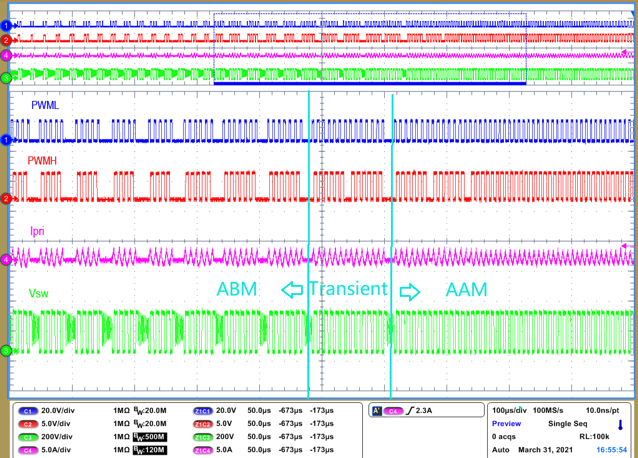SLUAAF9 September 2021 UCC28782
- Trademarks
- 1 Initial Board Visual Inspection and Start-up Check
- 2 Typical System Operating Waveforms
- 3Typical System Protection Waveforms
- 4Common Issues and Solutions
- 5References
2.6 ABM to AAM Mode Transition
Figure 2-7 demonstrates ABM transition to AAM. As load is closed to the boundary of ABM and AAM, the two adjacent burst packets with the maximum pulse count can stat to bundle together. To mitigate the output ripple and audible noise concerns, when the bundled burst packet appears two times with eight sequential burst cycles, the controller will reduce VBUR. The less energy per cycle with a lower VBUR will force the control loop to transition from ABM to AAM smoothly.
 Figure 2-7 ABM to AAM Mode
Transition
Figure 2-7 ABM to AAM Mode
Transition